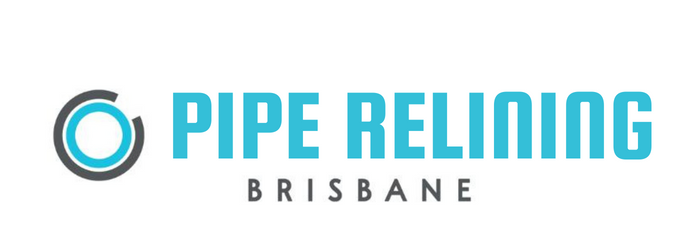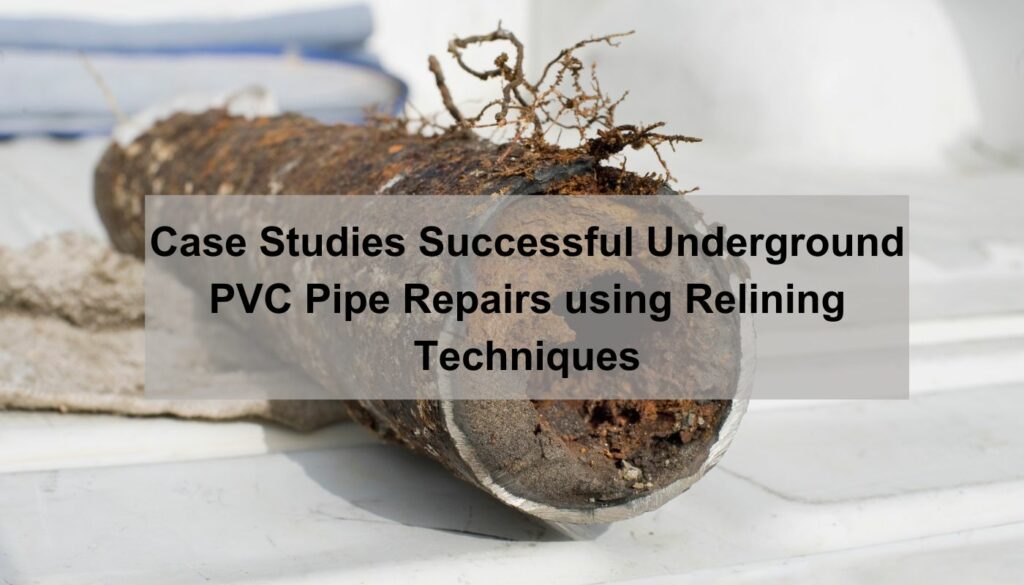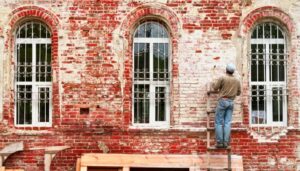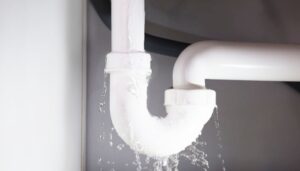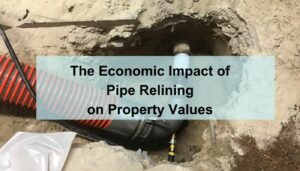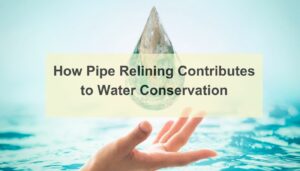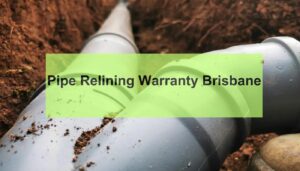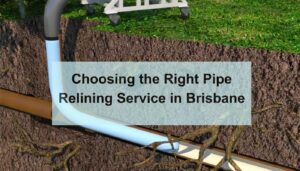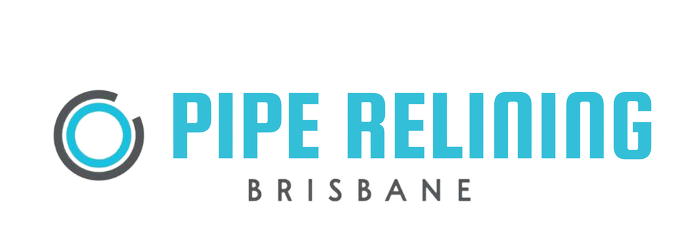In the world of infrastructure maintenance, few challenges are as pervasive and critical as the repair of underground PVC pipes. These pipes, integral to modern plumbing and sewage systems, are susceptible to a variety of issues ranging from cracks and leaks to tree root invasions and general wear and tear over time. Traditional repair methods often involve extensive excavation, significant disruptions, and considerable costs, making them less than ideal for many situations. However, a revolutionary approach to plumbing issues has been gaining traction due to its efficiency, cost-effectiveness, minimal environmental impact, and its ability to repair underground PVC pipe without digging: relining techniques.
This article aims to shed light on the innovative world of underground PVC pipe repairs through relining techniques, offering a beacon of hope for what can often be a daunting task. By diving into a series of case studies, we will explore how these methods have been successfully applied across different settings, from bustling urban landscapes to serene residential areas and complex industrial environments. Each case will provide unique insights into the challenges faced and the solutions implemented, highlighting the versatility and effectiveness of relining techniques in extending the life and reliability of underground PVC infrastructure, without the need for disruptive, extensive digging elsewhere.
Understanding PVC Pipe Issues
Underground PVC pipes, despite their strength and durability, are not immune to the trials posed by nature and time. One of the most common issues is cracking, which can occur due to ground movement, pressure from above-ground weight, or simply the aging process. Cracks can lead to leaks, compromising the efficiency of the water supply or drainage system and potentially causing significant water loss or environmental damage.
Another formidable adversary of PVC pipes is tree root intrusion. As trees search for moisture, their roots can find their way into even the smallest cracks or joints in pipes, gradually widening them and eventually causing blockages or severe damage to plumbing system. This issue is particularly prevalent in areas with large trees and older piping systems.
Age-related wear and tear also play a significant role in the deterioration of PVC pipes. Over time, exposure to chemicals, changes in temperature, and constant pressure can weaken pipes, making them more susceptible to damage and failure.
Traditional repair methods, such as digging up and replacing the affected sections, can be not only time-consuming and disruptive but also environmentally damaging and costly. Roads need to be closed, landscapes dug up, and daily life interrupted, making these methods less than ideal in densely populated or environmentally sensitive areas.
This backdrop sets the stage for the exploration of relining techniques, a no-dig solution that offers a promising alternative to conventional repair methods. Through the application of innovative technologies and materials, relining can restore the functionality of damaged or corroded pipes, with minimal disruption and at a fraction of the cost of traditional repairs, heralding a new era in underground pipe maintenance.
What is Relining?
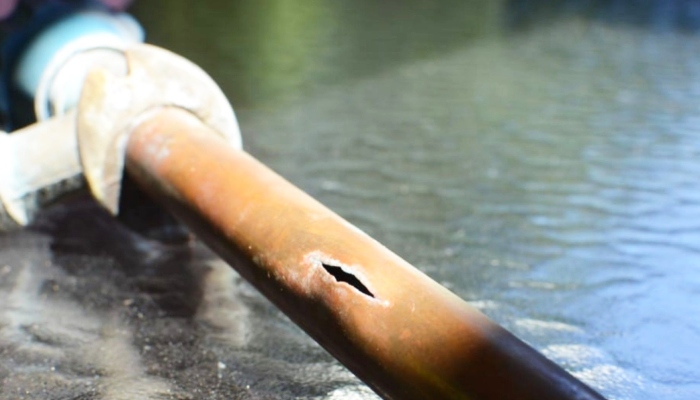
The advent of the pipe relining process marks a significant milestone in the field of infrastructure repair, offering a less invasive, more efficient alternative to traditional pipe repair methods. Originating as a solution to minimize disruption in densely populated or environmentally sensitive areas, relining has evolved into a widely accepted practice for repairing underground pipes, embodying the principles of no dig pipe repair and plumbing services aimed at repairing damaged pipes.
This technique involves creating a new pipe within the existing damaged one, essentially repairing the pipe from the inside out, offering a practical solution for plumbing services focused on maintaining system integrity with minimal disruption.
At its core, the relining pipe lining process involves inserting a flexible tube coated with a special resin into the damaged pipe. This tube is then inflated to press against the interior walls of the existing pipe. Once set, the resin hardens, creating a new pipe within the old one. This new pipe is not only seamless, preventing future root intrusions and leaks, but also durable and resistant to chemical and physical stresses.
The benefits of using relining techniques over traditional methods are manifold. Firstly, it represents an essential advancement in no dig pipe repair, as it requires no excavation to access the damaged pipes. This aspect alone saves time, reduces environmental impact, and minimizes inconvenience to the public and property owners. Additionally, relining can be more cost-effective, as it avoids the extensive labor and material costs associated with replacing entire sections of pipe.
Finally, the durability of relined pipes often surpasses that of their predecessors, offering a long-term solution that can extend the life of the piping system without the need for frequent repairs. This makes relining an invaluable service in the repertoire of modern plumbing services, addressing the need for effective and efficient solutions in repairing damaged pipes.
Case Study Overview

To illustrate the effectiveness and versatility of pipe relining techniques, we delve into a series of case studies that span a variety of settings, each with its unique challenges and solutions. These case studies were selected based on their relevance, the complexity of the issues they presented, and the innovative approaches taken to address them. Together, they provide a comprehensive look at how relining techniques can be adapted to different environments and problems, offering valuable insights and lessons learned.
The first case study takes us to the heart of a bustling urban environment, where the challenges of infrastructure maintenance are compounded by the dense population and the need to minimize disruption. The second case focuses on a residential area, highlighting the importance of efficient, timely repairs in maintaining the quality of life for homeowners and residents. The third case study shifts to an industrial complex, where the stakes for maintaining operational efficiency and safety are incredibly high.
Each case study will cover the background of the project, the specific issues faced, the relining techniques and materials used, and the outcomes of the repair efforts. Through these detailed explorations, we aim to showcase the adaptability of relining techniques to different scenarios and the tangible benefits they offer over traditional repair methods.
Case Study 1: Urban Infrastructure Rehabilitation
In the heart of a bustling metropolitan area, city planners faced a daunting challenge: a critical section of underground PVC sewer pipes had developed multiple leaks and cracks, leading to significant water loss and the risk of soil contamination. Traditional repair methods for repairing pipes would have required extensive excavation along a busy thoroughfare, disrupting traffic, businesses, and the daily lives of thousands of residents. The city turned to relining technology as a solution that promised minimal disruption and a durable repair.
Project Background
The affected sewer system served a large portion of the city’s downtown area, handling millions of gallons of wastewater daily. The pipe sections, installed in the 1980s, had deteriorated over decades of service. Inspection revealed multiple points of failure, including cracks and openings where tree roots had begun to intrude.
Relining Process
The project utilized cured-in-place pipe (CIPP) relining, a technique that involves inserting a resin-coated liner into the damaged pipe. The liner was then expanded to fit snugly against the pipe’s interior walls and cured using ultraviolet (UV) light, creating a new, seamless pipe within the old structure. This process was chosen for its speed, efficiency, and the strength of the pipe inside the resulting pipe, which was resistant to further root intrusion and corrosion.
Challenges and Solutions
One major challenge was the pipe’s location under a major roadway, requiring work to be conducted at night to minimize disruption. Additionally, the presence of numerous utility lines near the pipe necessitated precise navigation to avoid further damage. Through careful planning and coordination with utility companies, the project team was able to insert the liners without incident.
Results
The relining was completed over several weeks, with each section of pipe taking only a few nights to repair. Post-repair inspections showed that the new liners had effectively sealed all leaks and provided a smooth, durable surface resistant to future damage. Traffic disruption was minimal, and the project was hailed as a success by city officials, residents, and local businesses alike.
Case Study 2: Residential Area Pipe Repair
A residential neighborhood on the outskirts of a mid-sized city faced recurring sewer backups and water quality issues due to an aging underground PVC pipe system. The community, established in the 1970s, had pipes that were near the end of their service life, exhibiting signs of wear, cracks, and root intrusions from the mature trees lining the streets.
Project Background
The local utility company prioritized this area for repair to prevent further property damage and health risks associated with sewer line backups. Given the community’s tight-knit nature and the desire to preserve the area’s landscaping and hardscaping, a non-intrusive repair method was essential.
Relining Process
The utility company opted for a pull-in-place (PIP) pipe relining technique, which is particularly suited for residential areas. This method involves pulling a resin-saturated liner through the damaged pipe, then inflating it to form a tight fit against the pipe’s interior walls. Once cured, the liner effectively becomes a new pipe, with a life expectancy comparable to that of new PVC piping.
Challenges and Solutions
The project faced logistical challenges, including limited access to some backyard easements and the need to work around residents’ schedules to minimize inconvenience. Communication and coordination were key, with the project team holding town hall meetings to inform residents of the work schedule and address concerns. Specialized equipment was used to navigate the liner through tight bends and existing connections, ensuring a seamless repair.
Results
The relining project was completed within the scheduled timeframe, with residents experiencing only minimal disruption. Follow-up surveys indicated a significant improvement in water quality and a reduction in sewer backups. The neighborhood’s infrastructure was effectively modernized without the need for disruptive excavation, preserving the community’s aesthetic and environmental integrity.
Case Study 3: Industrial Complex Maintenance
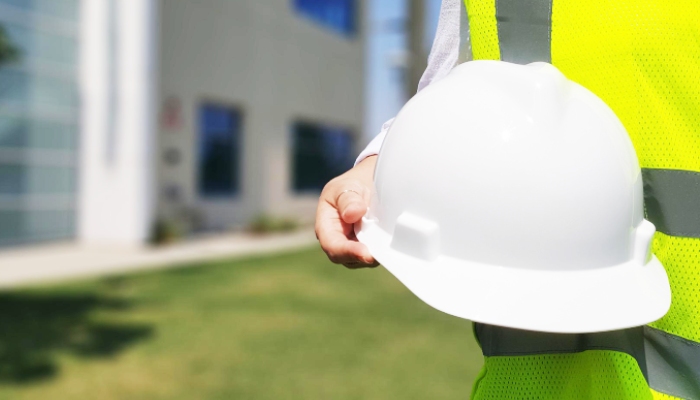
An expansive industrial complex specializing in chemical manufacturing faced significant challenges with its wastewater management system. The underground PVC pipes, critical for safely transporting hazardous waste away from production areas, had begun to show signs of severe corrosion and leakage, posing a risk to both the environment and the facility’s operations. Traditional repair methods were deemed too disruptive and time-consuming, given the 24/7 nature of the manufacturing processes.
Project Background
The complex, operational since the late 1990s, had expanded its production capacity over the years, placing additional strain on the original wastewater piping. Regular inspections revealed that several sections of the sewer pipe and network were compromised, with the potential for hazardous leaks.
Relining Process
Given the high stakes involved, the facility managers opted for an epoxy pipe relining solution, known for its chemical resistance and durability. This method involved cleaning the existing pipes, then applying a multi-layer epoxy resin coating from the inside. The epoxy was carefully selected to withstand the specific chemicals processed by the facility, ensuring long-term resilience and safety.
Challenges and Solutions
The primary challenge was executing the repairs without interrupting production, as any downtime would result in significant financial losses. The project team implemented a phased approach, segmenting the pipe network and scheduling repairs during periods of lowest production activity. Advanced robotic equipment was used to apply the epoxy coating with precision, avoiding the need for extensive manual access and speeding up the process.
Results
The relining project was completed successfully, with all targeted pipe sections restored to a condition that exceeded their original performance specifications. The use of epoxy relining not only prevented potential environmental disasters but also extended the lifespan of existing damaged pipe in the wastewater system, ensuring it could support the complex’s operations long into the future. The project demonstrated the feasibility of implementing advanced repair technologies in sensitive, high-stakes industrial environments.
Comparing Relining with Traditional Methods
The evolution of pipe relining techniques has provided a compelling alternative to traditional pipe repair and replacement methods. This comparison highlights the differences between pipe relining solutions and traditional methods across various parameters such as cost, time, durability, and environmental impact.
Cost
Relining often presents a more cost-effective solution compared to traditional excavation methods and replacement, primarily due to the reduced labor and material costs. While the initial investment in relining materials and technology may be high, the overall expenses are typically lower when accounting for the avoidance of excavation, road closures, and landscape restoration costs associated with traditional methods.
Time
Pipe relining can be completed much more quickly than traditional methods, which require extensive excavation and pipe laying work. Relining projects, as demonstrated in the case studies, can often be conducted within a matter of days or weeks, minimizing disruption and allowing for faster return to normal operations.
Durability
Relined pipes often offer superior durability compared to newly installed pipes. The materials used in relining, such as epoxy and cured-in-place pipes, are designed to resist corrosion, tree root intrusion, and wear and tear, effectively extending the lifespan of the existing infrastructure without the need for frequent replacements.
Environmental Impact
The environmental benefits of relining are significant. By avoiding excavation, relining reduces the disturbance to soil and local ecosystems, minimizes the carbon footprint associated with transporting and disposing of old piping materials, and decreases the consumption of new raw materials. Additionally, the reduced disruption to the community and preservation of landscapes are key environmental and social advantages.
Future of Underground PVC Pipe Repairs
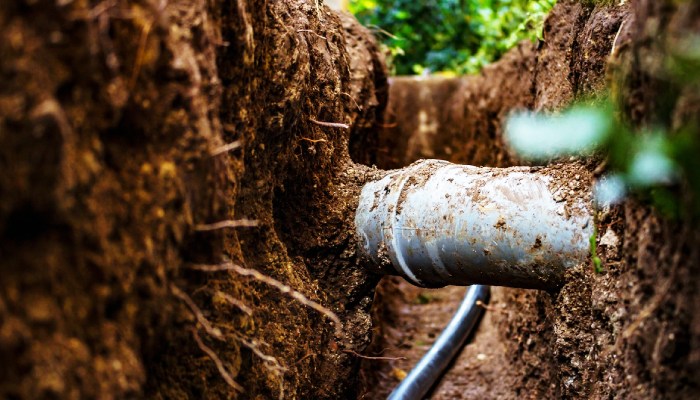
The landscape of underground PVC pipe repair is on the cusp of significant technological advancements, with relining techniques leading the charge. As we look to the future, several trends and innovations promise to further revolutionize this essential aspect of infrastructure maintenance.
Emerging Technologies
Innovations in materials science are producing even more durable and flexible pipe lining materials, capable of withstanding harsher conditions and extending the life of pipes beyond current expectations. Smart relining solutions, equipped with sensors for real-time monitoring of pipe health and performance, are becoming a reality. These sensors can predict failures before they happen, enabling preemptive repairs and reducing the need for emergency maintenance.
Scalability and Application
The scalability of relining techniques is expanding, with new methods being developed to address a broader range of pipe sizes and types, including those with complex configurations or located in challenging environments. This scalability enhances the applicability of relining across various sectors, from residential to industrial and municipal systems.
Expert Predictions
Experts predict that the adoption of trenchless technology, including pipe relining, will continue to grow, driven by its cost-effectiveness, reduced environmental impact, and minimal disruption to communities. There is also a growing emphasis on sustainability in infrastructure projects, with the no dig pipe relining positioned as a key technique for achieving greener repair solutions.
As these trends evolve, the future of underground PVC pipe repairs looks promising, with relining techniques set to become even more integral to maintaining the resilience and reliability of our water and sewer systems.
Conclusion
The exploration of successful case studies in this article highlights the transformative impact of relining techniques on the repair of underground PVC pipes. From bustling urban centers and quiet residential neighborhoods to critical industrial complexes, relining has proven to be an effective, efficient, and environmentally friendly alternative to traditional dig pipe repair methods.
The benefits of relining cost savings, reduced disruption, enhanced durability, and environmental preservation underscore its value in today’s infrastructure maintenance toolkit. As we look forward, the continued innovation and adoption of relining technologies promise to further elevate the standards of pipe repair, making our infrastructure more resilient in the face of evolving challenges.
The significance of relining in modern infrastructure maintenance cannot be overstated. It represents not just a technical solution, but a commitment to sustainable, forward-thinking approaches to preserving our essential water and sewer systems. For industry professionals, embracing relining techniques is not just an option but a necessity, as we strive to build and maintain infrastructure that can withstand the test of time and serve future generations.
As we conclude this exploration of underground PVC pipe repairs using relining techniques, let us reflect on the importance of innovation, adaptability, and sustainability in the ongoing quest to improve our infrastructure. The case studies presented offer not only a testament to the success of relining but also a blueprint for the future of infrastructure maintenance.
